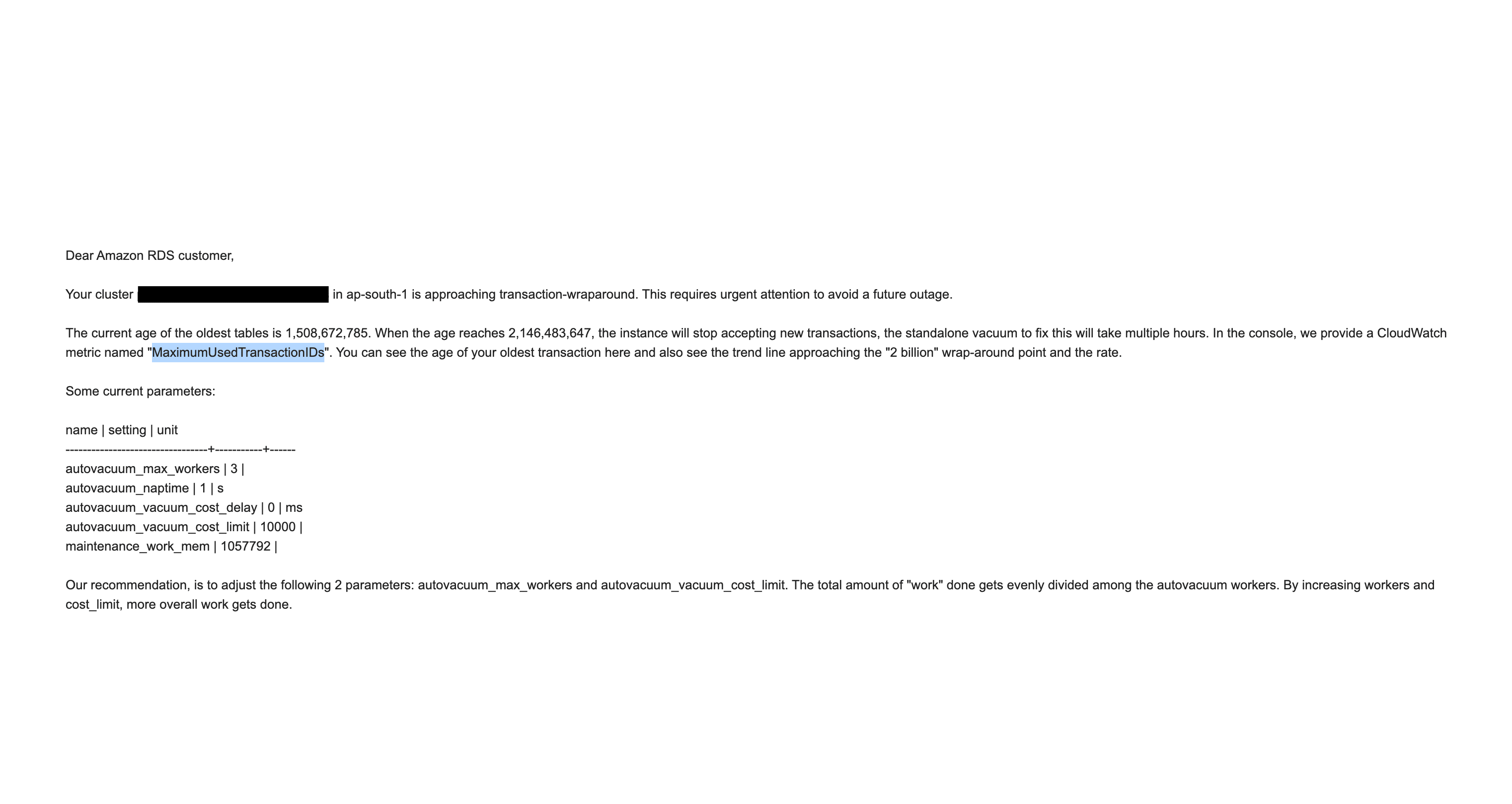PostgreSQL XID Wraparound: A Critical Infrastructure Crisis Averted
Learn about PostgreSQL's transaction ID wraparound issue, how it nearly caused a database outage, and the steps taken to prevent it from happening again.

Last week, I faced an interesting problem at work. I received a critical warning from AWS regarding our PostgreSQL RDS cluster: It was approaching transaction ID wraparound, something that can cause a full database outage if not handled in time.
This was a good reminder of how important it is to understand the internals of the systems we rely on every day.
Understanding PostgreSQL’s Transaction ID System
PostgreSQL uses a 32-bit transaction counter (XID) that wraps around after approximately 2.1 billion transactions. This might sound like a lot, but for high-throughput applications, this limit can be reached surprisingly quickly.
The Problem
If old rows aren’t vacuumed and frozen in time, PostgreSQL can no longer determine which rows are visible. When this happens, PostgreSQL is forced to stop accepting new writes to prevent data corruption, essentially bringing your application to a halt.
Why This Happens
PostgreSQL’s MVCC (Multi-Version Concurrency Control) system relies on transaction IDs to determine row visibility. When the XID counter approaches wraparound:
- Old transactions become “invisible” to new transactions
- Row visibility becomes ambiguous
- PostgreSQL stops accepting writes to prevent data corruption
- Your application goes down until the issue is resolved
What happened
In our case, it turned out that autovacuum wasn’t keeping up due to:
- High write throughput overwhelming the vacuum process
- Misconfigured autovacuum thresholds
- Large tables with unvacuumed rows accumulating faster than they could be cleaned
The Solution: Step-by-Step Recovery
Here’s what helped us resolve the crisis:
-
Identifying Large Tables with Unvacuumed Rows
-
Manual VACUUM Operations
-
Tuning Autovacuum Settings
Prevention: Monitoring and Best Practices
Key Metrics to Monitor
-- Monitor XID age across all databases
SELECT
datname,
age(datfrozenxid) as xid_age,
round(age(datfrozenxid)::numeric / 2000000000 * 100, 2) as percent_to_wraparound
FROM pg_database
ORDER BY age(datfrozenxid) DESC;Warning Thresholds
- Yellow Alert: When
age(datfrozenxid)> 1.5 billion transactions - Red Alert: When
age(datfrozenxid)> 1.8 billion transactions - Critical: When
age(datfrozenxid)> 2.0 billion transactions
Best Practices
- Monitor autovacuum activity regularly
- Set up alerts for XID age approaching dangerous levels
- Tune autovacuum parameters based on your workload
- Consider partitioning large tables to improve vacuum efficiency
- Plan for maintenance windows for manual vacuum operations if needed
The Lesson Learned
It’s one of those things that often goes unnoticed until it becomes urgent. If you’re running PostgreSQL on RDS (or self-managed), keep an eye on age(datfrozenxid) and ensure autovacuum is running efficiently.
Invisible debt in infrastructure has a way of surfacing at the worst possible time.
This one got our attention early, and it’s worth sharing in case it helps others avoid a painful surprise.